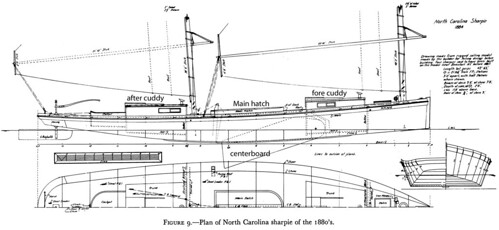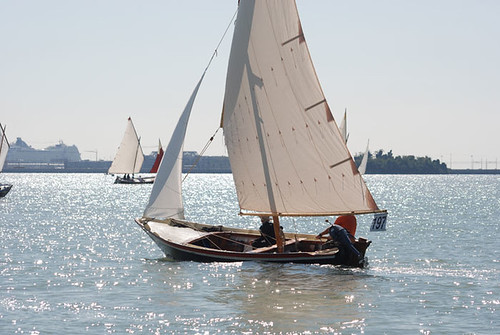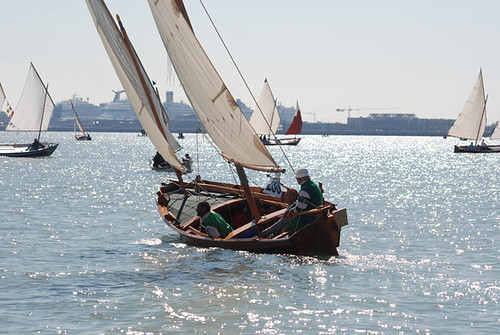 Thanks: 0
Thanks: 0
 Likes: 0
Likes: 0
 Needs Pictures: 0
Needs Pictures: 0
 Picture(s) thanks: 0
Picture(s) thanks: 0
Results 31 to 45 of 67
-
7th December 2008, 06:19 PM #31

I have put a link to the website elswhere too ... but I think it is interesting enough to have here.
Peter Ewart was a Canadian artist who lived through most of the last century.
His family have set up a website and put some videos up on Youtube.
Some of these old films have examples of canoe use and canoe camping as well as regular camping.
A real feeling of how life was for Peter as he grew from being a boy in the early videos to having his own family in the website.
His father Clarence was a canoing/outdoors type too - there is much material on him including his canoing honeymoon with his new wife Edith

The videos can be seen here
http://www.youtube.com/profile?user=...io&view=videos
The Varty lake also contains images of canoes and the canoe/camping lifestyle.
The website is at
http://peterewart.com/bio.php
Peters daughter Linda points out which parts of the website is the most interesting for boats ... but I found the site interesting and touching in a number of ways
Hi, Michael! I've just learned how to respond to your e-mail. Thanks for your note. The canoe in my Canoe Sailing clip has a story you may be interested in and can link to through my web site. I've been trying to put the information in the form of a comment, but it keeps being rejected for some reason.
FYI, the movie was made in about 1927. At that time the canoe was about 12 years old. Clarence Ewart, my grandfather, was the owner. For more information and still photos of Clarence and this canoe you might enjoy a look at the biography section of peterewart.com under 'Early Childhood', '1940-1944' and 'A Most Unusual Honeymoon.'
Linda
-
7th December 2008 06:19 PM # ADSGoogle Adsense Advertisement
- Join Date
- Always
- Location
- Advertising world
- Age
- 2010
- Posts
- Many
-
9th January 2009, 07:19 AM #32
 SENIOR MEMBER
SENIOR MEMBER











- Join Date
- May 2008
- Location
- UK
- Posts
- 848

Perhaps as fans of flat bottomed boats forumites might enjoy this link to some mighty sharpies sailed by "feeble crew".
http://feeblecrew.com/


http://www.flickr.com/photos/boatmik/4117913191/
How those shallow rudders controlled these very fast boats is hard to imagine, perhaps they were very well balanced and it seems very sea worthy.
"The sharpie's rapid spread in use can be accounted for by its low cost, light draft, speed, handiness under sail, graceful appearance, and rather astonishing seaworthiness. Since oyster tonging was never carried on in heavy weather, it was by chance rather than intent that the seaworthiness of this New Haven tonging boat was discovered. There is a case on record in which a tonging sharpie rescued the crew of a coasting schooner at Branford, Connecticut, during a severe gale, after other boats had proved unable to approach the wreck."
"Kunhardt mentions the extraordinary sailing speed of some sharpies, as does certain correspondence in Forest and Stream. A large sharpie was reported to have run 11 nautical miles in 34 minutes, and a big sharpie schooner is said to have averaged 16 knots in 3 consecutive hours of sailing. Tonging sharpies with racing rigs were said to have sailed in smooth water at speeds of 15 and 16 knots. Although such reports may be exaggerations, there is no doubt that sharpies of the New Haven type were among the fastest of American sailing fishing boats."
BrianLast edited by Boatmik; 20th November 2009 at 10:44 AM.
-
9th January 2009, 01:00 PM #33

I have quite a lot of experience sailing, building and designing sharpies. The rudder shown above is very typical and it's retractable. The image above is showing it in the up position. In the down position(s) it would be nearly as deep as the lowered centerboard. Chapelle drew this one with the tiller in the second notch (lowered slightly) and the blade nearly full up (it could go up a few more inches). With the tiller all the way up and the rudder blade all the way down it's effective.
They do have flaws, like most everything in yacht design. In heavy air, when the boat is sailing fast (planning), the helm can get squishy or vibrate badly. I've never employed this style of rudder on any of my designs unless forced by a client. I use a much higher aspect, kick up spade, with considerably less balance then the traditional sharpie style shown.
This particular design shows a fairly well burdened sharpie hull, that in spite of it's fine entry and relatively flat run, would like carry a pretty fat quartering wave with a modest to full load. With enough crew to hold her down and sailed light, she'd be a fun, if wet ride in stiff winds.
-
10th January 2009, 03:09 AM #34
 SENIOR MEMBER
SENIOR MEMBER











- Join Date
- May 2008
- Location
- UK
- Posts
- 848

Thanks PAR, explains a lot for me, that the shaft allows the rudder blade to go much deeper. Brian
-
10th January 2009, 08:04 AM #35
 Member
Member











- Join Date
- Oct 2008
- Location
- UK
- Posts
- 69

I have posted these in another thread but since sharpies came up.....
All these boats are from Venice and have hull shapes pretty much identical to North American sharpies.
The first drawing shows the enormous rudder that lets these boats sail with no centreboard.




Chris
-
16th April 2009, 10:19 PM #36

A look at Bolger lightweight schooners.
These boats are quite improbable .. even after years of seeing them sail around the lower murray lakes.
At one stage there were two folding schooners here. One called Brian and Doreen (built and owned by a retired couple named Brian and Doreen!) and another put together by a High Court Judge.
Tim Fatchen built the shorter one piece version and has held a number of serious trophies in his "Flying Tadpole"
Anyway ... you can see a story about how these boats hold up ok upwind if you keep them moving and just howl downwind even against much more modern boats.
http://www.crew.org.nz/NEWS/Aussie+N...+Schooner.html
If you want to read how Tim Fatchen played havoc with the handicapping system in South Australia you can read it all here. have a look at the racing victories.
http://www.ace.net.au/schooner/index.htm#menu
I have sailed beside Brian and Doreen in BETH ... it is rather uncanny - the boat is not much wider than the average 14 foot boat So when it is sailing alongside .. it looks much longer than its 31 feet. But when it turns to sail away from you ... it looks like a 14 foot trad rig sailboat.
Lots of fun.
Michael
-
17th November 2009, 09:43 AM #37

Hi All,
I haven't added a lot here for a while. Maybe I haven't been websurfing for a while or life has been FAR too interesting to look inside a computer for fun stuff.
This comes from David Graybeal and is a link to some great pics of trad, and not so trad fishing boats.
The most gorgeous are the Columbia River Gillnetters that I met in Astoria at the mouth of the Columbia - so don't miss those.

www.besthistoricfishing.net
MIK
-
19th November 2009, 05:31 PM #38

A short film on Pirogue making. They claim it may be one of the last authentic Pirogues made.
Rather lovely. don't let the still images at the beginning put you off.
FolkStreams » The Pirogue Maker
MIK
-
19th November 2009, 09:16 PM #39

Mik that film is wondeful it brings a whole new meaning to building wooden boats and ain't it a dainty thing. I did like the shave with the piviting handel, cool the broad axe and the adzes fantastic. Thanks
Mike
-
20th November 2009, 10:49 AM #40

Those are the surprising things to me too. Seeing really trad tools fired up in anger rather than a minute long demonstration. And nicely edited so you can see the flow of work.
Also like you say ... dainty.
For something that is a dugout it is really pretty and light. I will have to have a closer look to see if it is any internal structure in some of the others in the footage.
Another interesting thing is that you have a great lump of wood and you could cut out any shape at all. You could make a whitehall or a kayak form ... but this pirogue shape comes out each time without any plans at all.
The mind and feeling creates the form and makes it consistent.
MIK
MIK
-
21st November 2009, 11:38 AM #41
-
22nd November 2009, 09:04 AM #42
 Senior Member
Senior Member











- Join Date
- Jul 2009
- Location
- Netherlands
- Age
- 67
- Posts
- 248
 European Sharpie
European Sharpie
Hi MIK,
Perhaps interesting since you have sailed the Autralian Sharpie..............the "original" is still alive in my country....Foto gallerij
and a UK site British Sharpie Owners Association - The Sharpie
The original is a GREAT boat to sail in, massive wood, great looks, pretty fast and very competitive racing. I have raced with it when I was 17 yrs old....only in light weather, because the skipper needed at least 100kg crew when it started blowing
The organization has bought several old wrecks and rebuild them to keep them alive.
Lots of pictures and few video's here.
-
23rd November 2009, 10:47 AM #43

Howdy Watermaat,
I have seen at least two of the heavyweights here. The class got a boost as they were originally brought here for the '56 olympics. (in melbourne - won by a Kiwi with an Australian second)
By 1960 everyone was tired of picking them after racing up so moved to plywood and brought the hullweight close to about a third of the original (particularly if you take the steel centreboard being replaced by a wooden one).
That was a joke ... actually Australians threw themselves into plywood boatbuilding and a whole range of new lightweight boats appeared in the early '60s. Some of the older classes that people loved were changed over. So lots of people loved the Sharpie.
I have never sailed a heavyweight, but imagine that the wonderful handling (providing you keep the boat dead flat) would be the same. Nothing loves rough water more than a sharpie.
I did have my eyes open for one of the heavyweights though. When I lived in houses I could have quite imagined having one in the garage!
I do know the links you posted well, but others will find them quite interesting too I think.
MIK
-
23rd November 2009, 11:28 AM #44
 SENIOR MEMBER
SENIOR MEMBER











- Join Date
- Sep 2007
- Location
- Savannah GA USA
- Posts
- 583

That pirogue film is a treasure, MIK. I had to watch it twice before I could let go of it.
I'm curious about that hole they bored in the bottom. At first I thought it was there to drain the hull when out of the water. My second thought was they are checking the thickness of the bottom wood. If that's what they are doing it seems a rather drastic measure to learn something that could be determined through less destructive means.
What do you think it is drilled for?The "Cosmos Mariner,"My Goat Island Skiff
http://s176.photobucket.com/albums/w168/MiddleAgesMan/
Starting the Simmons Sea Skiff 18
http://www.flickr.com/photos/37973275@N03/
-
23rd November 2009, 12:33 PM #45

I don't really know. I accepted Mike's comment initially, but now think that you would need lots of holes to check overall fairness. Maybe that's the way they keep the timber wet so it doesn't crack up?
Also remember that the South of the USA is almost viciously humid, so the wood will have a relatively good time of it. If you built one of these in OZ you would need a hole it it to make sure it spends most of its time sunk so the wood would not split.
MIK
Similar Threads
-
Interesting rules of boat building - Australian History of wooden yacht/boat design
By soundman in forum BOAT BUILDING / REPAIRINGReplies: 23Last Post: 27th July 2009, 06:11 PM -
Dory Boat yahoo group - interesting discussion :-)
By robhosailor in forum Michael Storer Wooden Boat PlansReplies: 8Last Post: 12th February 2008, 08:08 AM -
A few interesting links
By Groggy in forum Links to: WEB SITESReplies: 0Last Post: 22nd December 2005, 03:22 PM




 Reply With Quote
Reply With Quote



